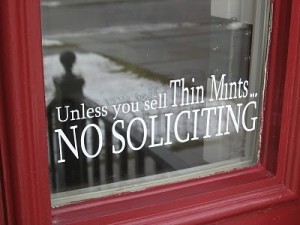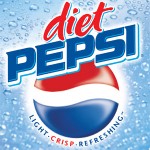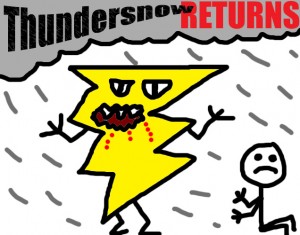Posts Tagged ‘Small Business’
Monday, January 24th, 2011

As a small business or startup there is a constant challenge of developing a brand for your business. Unlike large companies like Coke and Apple, small businesses and startups do not have the resources to invest the time, money and effort to build a brand through advertising. So these businesses are left to rely on my scrappy tactics to develop and grow their brand. Of course with all of the large, medium and small competitors, it can be difficult to elevate your small business above the noise that is out there. Here are a few tips that can help your small business build your brand and show that you can be trusted to deliver for your customers:
1. Give Each Customers an Experience: Think about the great brand experiences that are out there today. There are product experiences like Apple and Zappos. Then there are city experiences like Las Vegas. All evoke a certain type of experience when you interact with those brands (yes, I am calling Las Vegas a brand!). So when your business interacts with your customers, treat them to an experience. What type of experience you may ask? How about “white glove” treatment from beginning until end where you make every effort to anticipate your customer’s wants, needs and desires. This is not an easy thing to accomplish, but just making this type of effort will ensure you try to create a good customer experience for your customers.
2. Every Interaction Should Make an Impression: So this is taking point #1 above and breaking it down. Think about your customer’s touch points for your business. Now think about how you interact with your customers at every touch point. Is it the first time they reach your website? The first time they call your office? An email inquiry about your product or a meeting at a trade show? A conversation over Twitter? Now try to aim to make every experience with your customers one that they will remember. I am not advocating something over the top. I am merely advocating taking special care of the customers at every interaction with your business. For example, talk to your customer, listen to them, and take the time to say that you value them as a customer. Always remember find a way to go the extra mile to help your customers life a little easier or happier. That is why every email should be thought out, every entry point to your website considered so you can get into the mind of a customer and make a good impression at every point with them.
3. Help Your Customers & They Will Talk About Your Business: Building on points #1 and #2, if you make an impression and give customers a great experience, you will give your customers reasons to talk about your business, service or product. What better way to build your brand by having your customers be your brand messengers to potential customers and leads that are out in the community. That is why the more you go out of your way to build up credibility and trust with your customers by repeatedly beating their expectations, the easier it is for those customers to tell the world about buying from your small business.
4. Promote Your Customer’s Successes: We have found at Kikscore one of the best ways to help ourselves and our brand is by promoting our own customers. We have done that by finding every opportunity to promote our customers through various avenues like our blog, on Twitter and by supporting them at every opportunity. One of ways we have done that is by giving our customers a forum on our own blog to tell their own small business success stories. What can you do? Take your customers’ successes and help them tell the world. If your product, service or company was involved with that success, that is even better for you.
Bottom line: Sell yourself by promoting your own customers!
5. Always Aim for a Consistent Message & Customer Experience: One of the biggest enemies of a strong band is an inconsistent message and uneven customer experience. Do you treat customers differently? Is your product simple to use, but your marketing copy and help materials complex and too wordy? How about your customer service – is it very responsive over the phone, but slow or non-existent on Twitter and Facebook? The key is to make sure that the way that your customers interact with your business and startup is in a consistent manner across all channels. This consistency is critical to ensure a brand that does not create mixed messages with customers. A cohesive and consistent brand is hard to create, but it is imperative to achieve to build a great brand.
While small businesses may not have the same resources as large companies, they do still have the ability to build a strong band without paying a huge sum of money. But the monetary investment is replaced with a huge human investment in time, effort, messaging and customer service. That human investment if deployed carefully and deliberately across all parts of a small business or startup can pay major dividends. The trick is studying your business, your customers and the touch points and then developing a branding plan and executing on it.
These are just some of the ways to develop a great brand for your small business or startup. Let us know if you have any tips in the comment below.
 Tweet This Post
Tweet This Post
 College is a time for learning and really bad jobs. Some of us work at Subway, while others (me) had to participate in a parade of horrible jobs. I worked for my father and he had a wide range of business endeavors – commercial real estate, mini-storage and estate auctions. He also had partners that had really side businesses. One installed cable antennas in rural North Dakota; the other built homes.
College is a time for learning and really bad jobs. Some of us work at Subway, while others (me) had to participate in a parade of horrible jobs. I worked for my father and he had a wide range of business endeavors – commercial real estate, mini-storage and estate auctions. He also had partners that had really side businesses. One installed cable antennas in rural North Dakota; the other built homes.










